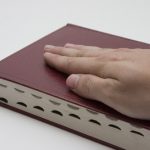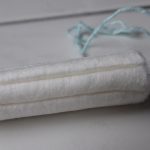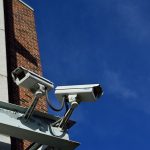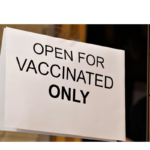Sydney Council Plans to Designate 54 More Alcohol Free Zones
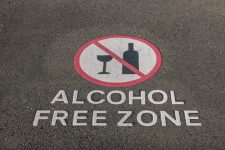
As a general rule, it is not an offence for adults in NSW to drink alcohol in public.
But over the years, various councils across the state have introduced alcohol free zones – where the consumption of alcohol is prohibited.
Against that trend, the City of Sydney removed public drinking restrictions in 62 areas across the city in April last year.
The move was heralded as an enlightened approach by a council that had previously been known for placing greater rules and restrictions on everything from parking, to displaying signs, to smoking.
However, the Council has now proposed 54 public areas that are to be the subject of new alcohol restrictions. The sites were selected based upon recommendations by by NSW police and members of the community.
The large number of proposed temporary and permanent alcohol free zones and alcohol prohibited areas is listed on the City of Sydney website. If approved, most will come into effect on December 21 this year and the bans will continue through to March 2020.
Surry Hills will be hit hardest by permanent alcohol free zones with ten streets earmarked as potential sites. Whilst almost the entire Glebe Foreshore is set to become a timed alcohol prohibited area with bans on drinking between the hours of 10 pm and 10 am.
And while these alcohol no-go zones are said to curb alcohol-related crime and problematic drinking, critics say they do nothing of the sort. And these measures actually disproportionately impact marginalised populations, mainly the homeless.
Public drinking laws
In the late 1970s, public drinking was decriminalised in NSW. Following this move, NSW police were provided with greater move on powers, and local councils were given the authority to establish alcohol free zones and prohibited areas.
Alcohol free zones cover public roads, footpaths, carparks and laneways, while alcohol prohibited areas can include public parks, beaches and reserves. Restrictions are placed on each zone and area for the period of four years. Then a council must re-evaluate whether the ban should stay in place.
Under section 642 of the Local Government Act 1993, an officer has the power to seize alcohol in the possession of a person in an alcohol free zone if they are drinking, or if the officer “has a reasonable cause to believe” the individual is about to, or has recently been drinking.
This reasonable cause is usually established by whether an individual has an open bottle. So, if a person is walking through an alcohol free zone with a half empty bottle of wine with the cap screwed on, police do have the power to confiscate it.
The officer can then dispose of the alcohol by tipping it out. The same provisions apply to alcohol prohibited areas under section 632A of the Act.
If a person does not comply with these measures, they can be charged with obstruction under section 660 of the Act. This offence carries a maximum penalty of a $2,200 fine.
Brief respite
In the past, Sydney lord mayor Clover Moore had been criticised as being rather trigger-happy when it came to approving these alcohol restrictions. Between 2009 and 2016, the number of alcohol free public spaces rose dramatically from 149 to almost 400.
Early last year, as part of its alcohol free zone review, Sydney council received 117 submissions objecting to the zones and areas, and only 29 in support of them.
The mayor championed the majority voice of her constituents, in a move that was seen to fly in the face of the state government’s stifling lockout laws. The council recommended 48 alcohol free zones and 14 alcohol prohibited areas be removed.
A spokesperson for the mayor said at the time that council made the decision on a case-by-case basis, which was supported by data provided by the Bureau of Crime Statistics and Research outlining the rate of alcohol-related crime in these areas.
In April last year, the City of Sydney voted to remove the 62 zones and areas. And the decision was heavily criticised by the NSW Police Association. However, with 54 new places currently up for consideration, it appears this change in policy might be rather short-lived.
A different approach is needed
Former deputy mayor Irene Doutney has been a long-time critic of establishing these types of alcohol restrictions. In 2014, she described them as “a poor tool for engaging with problematic public drinking.”
Ms Doutney said there was little evidence they reduced crime. And rather these measures “act as a tool to move homeless and disadvantaged people on.”
According to the former Greens councillor, these restrictions don’t adequately address problematic drinking. A better alternative would be to establish safe spaces for drinkers, where they are able to access support services.
Labor councillor Linda Scott told Sydney Criminal Lawyers® that she would be engaging with local communities to “ensure alcohol-free zones recommended to continue or to be established… continue to actually be necessary.”
Ms Scott pointed to alcohol restrictions “for Mardi Gras and in our major parks like Redfern park,” as areas of concern. “Alcohol free zones have criminalised those sleeping rough, and often fail to prevent problems they are seeking to address,” the councillor continued.
An easy target
It’s part of the culture in Australia to unwind with a drink. Indeed, it’s one of the only legalised drugs in this country. But, with the taxation of booze steadily rising, the price of drinking in bars is increasingly beyond the means of many in the community.
This affects low-income earners and the young, but most have the option of going home to have a few at the end of the day. However, for people who don’t have a place to live, they don’t have any other option than to drink on the streets. And that’s how these laws unfairly target them.
“By the nature of their lack of housing, people experiencing homelessness are often forced to conduct in public activities which others can do so in private,” explained Chris Hartley, the senior project officer at Homelessness NSW. And he added that this includes drinking.
Mr Hartley pointed out that “due to their public visibility” homeless people are more likely to be affected by these regulations. And he added that research has found these types of laws result in “increased interaction with the justice system for people experiencing homelessness.”
It seems that for the 386 people sleeping rough in Sydney’s CBD on the August night of the last City of Sydney street count not only did they not have a home to sleep in like the rest of the community, but they weren’t allowed to enjoy a drink, unless they found a place to hide.




